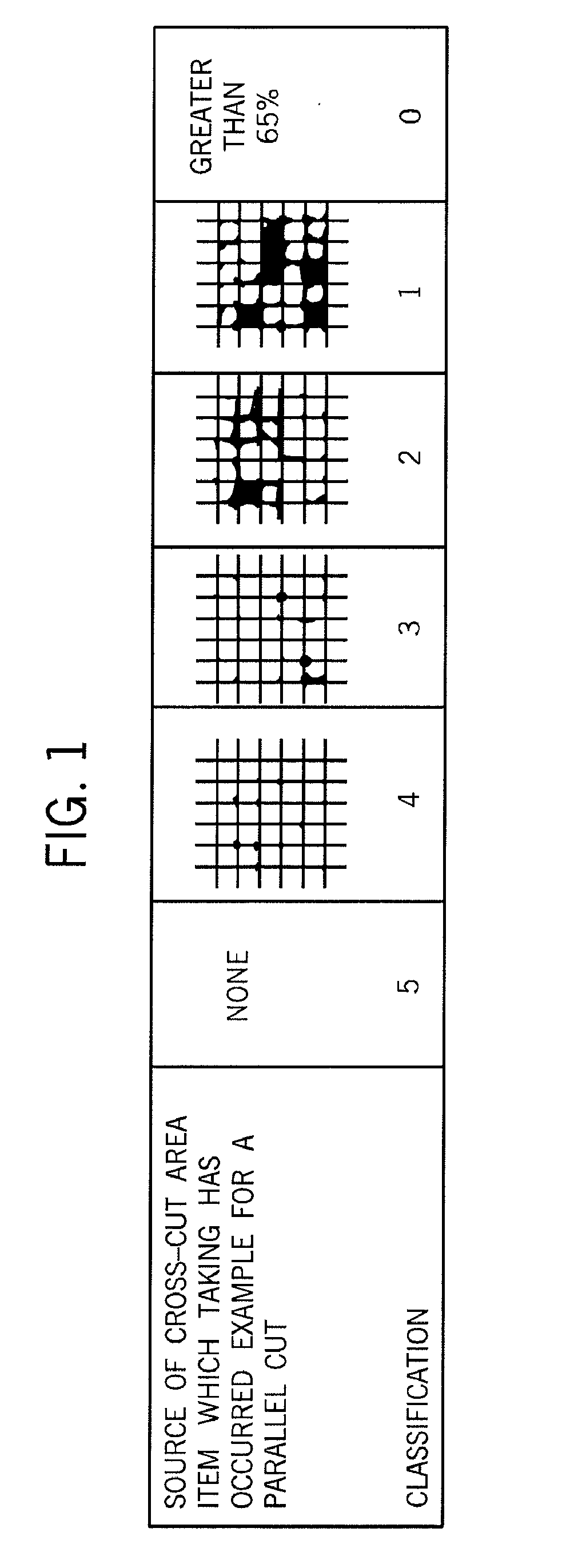Articles Comprising Nonpolar Polyolefin and Polyurethane, and Methods for Their Preparation and Use
a technology of polyolefin and polyurethane, which is applied in the field of compositions comprising nonpolar polyolefin and diolbased polyurethane, can solve the problems of high cost of primers, difficult to accept paint, and difficult to achieve the effect of reducing the cost of primers and decorative prints
- Summary
- Abstract
- Description
- Claims
- Application Information
AI Technical Summary
Benefits of technology
Problems solved by technology
Method used
Image
Examples
specific embodiments
Test Methods
[0274]Density is determined in accordance with American Society for Testing and Materials (ASTM) procedure ASTM D792-00, Method B.
[0275]Melt index (I2) in g / 10 min, is measured using ASTM D-1238-04 (version C), Condition 190 C / 2.16 kg. The notation “I10” refers to a melt index, in g / 10 min, measured using ASTM D-1238-04, Condition 190 C / 10.0 kg. The notation “121” refers to a melt index, in g / 10 min, measured using ASTM D-1238-04, Condition 190 C / 21.6 kg. Polyethylene is typically measured at 190 C while polypropylene is typically measured at 230 C. MFR means melt flow rate for propylene based polymers and is measured using ASTM D-1238 condition 230 C / 2.16 kg. For urethane based polymers, including blend comprising such polymers, except PELLETHANE™ polymers, melt index is measured according to ASTM D-1238 condition 190 C / 2.16 kg. For PELLETHANE™ melt flow rate is measured according to ASTM D-1238 condition 230 C / 8.7 kg.
[0276]Differential Scanning Calorimeter (DSC) is per...
example 1
High-Frequency Welding
[0307]Sheets comprising various blends of olefinic and polar polymers are prepared and tested for HF weldability. The composition of the blends and the results of the weldability tests are reported in Table Ex. 1. Blend A and B are compounded and pelletized using a twin screw extruder. The extruder temperature is set at 130 / 160 / 170 / 175 / 175 / 170 C with a screw speed of 50 rpm. Blends A and B are then melted and made into 0.3 mm thick film using a laboratory two roll mills at a mill temperature of 140 C. Blends C, D and E are compounded using a Haake machine at 160 C for 5 minutes. Blended polymers are made into films using a compression molding machine. 7.5 g of polymer blend is placed between two molding steel plates, with two polyester sheets to separate the mold plates and the sample. The compression molding machine is set to 180 C, and the polymer blend is compressed under a force of 10000 lbf for 1 minute to produce a film with about 300-350 μm thickness.
[03...
example 2
Paintability
[0310]Blends of EAO-5 and TPU-3 pellets are formulated on a Werner-Pfleider ZSK-25 compound extruder using a flat temperature profile of 170 C. The pellets are fed via a separate loss-in-weight feeder to the extruder. The blend formulations are reported in Table Ex. 2-1
TABLE EX 2-1Compositions of Selected Injection Molded PlaquesSample Composition63:37 EAO-5:TPU-375:25 EAO-5:TPU-385:15 EAO-5:TPU-3
[0311]The formulations are injection molded as plaques 20 mil thick on a Cincinnati-Molder at a melt temperature of 408 F, a mold temperature of 80 F, and an injection speed of 2 inches / second. These plaques are then painted with the different paints identified in the description of FIG. 2 and allowed to dry overnight.
[0312]The plaques are then subjected to a cross-hatch test using a Model P.A.T. Paint Adhesion Test Kit from Paul N. Gardner Company, Inc. The kit contains all of the tools and materials needed, except for the multi-tooth cutter blade, for conducting adhesion tests...
PUM
| Property | Measurement | Unit |
|---|---|---|
| Percent by mass | aaaaa | aaaaa |
| Fraction | aaaaa | aaaaa |
| Fraction | aaaaa | aaaaa |
Abstract
Description
Claims
Application Information
 Login to View More
Login to View More - R&D
- Intellectual Property
- Life Sciences
- Materials
- Tech Scout
- Unparalleled Data Quality
- Higher Quality Content
- 60% Fewer Hallucinations
Browse by: Latest US Patents, China's latest patents, Technical Efficacy Thesaurus, Application Domain, Technology Topic, Popular Technical Reports.
© 2025 PatSnap. All rights reserved.Legal|Privacy policy|Modern Slavery Act Transparency Statement|Sitemap|About US| Contact US: help@patsnap.com



